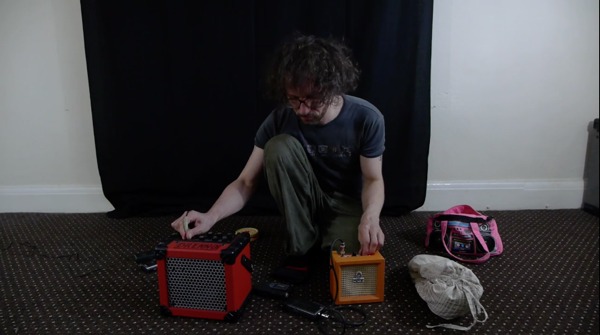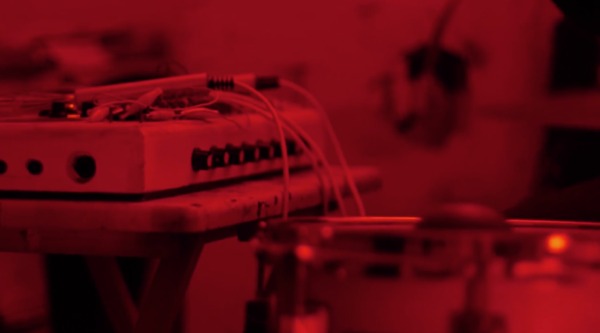How to create an analysis for the Making Decisions in Time framework
Thank you for wanting to take part in the Making Decisions in Time improv analysis framework project.
In order to create an improv analysis there are two steps. The first is documenting an improvisation, and the second is creating a video-cued reflective analysis. This guide will go into detail on how to accomplish both steps.
1. Document an improvisation
In order to analyze your improvisation you must first document a new improvised performance. Because of how the reflective analysis works (covered in the next step) the reflective analysis must take place very soon after the improvisation, so keep this in mind when deciding when to document your improvisation.
You should use the highest quality camera available to you, ideally with a minimum of HD (720p) quality. Using a laptop front-facing camera is ok as a last resort but the resolution on them tends to be quite poor. In order to have a clear image you should film yourself with as much light as possible. It is recommended to have multiple sources of light on you. So have either a lamp and an open/sunny window, or a ceiling lamp with a table lamp to one side.
Additionally, you should use a good quality audio recording setup. A portable Zoom-style recorder is perfect for this kind of recording, but depending on your instrument/approach, there may be more suitable recording approaches. If you are using electronics, specifically laptop-based ones, having some sort of direct signal recording is advisable. The audio doesn’t need to be “studio quality”, but the better the recording, the easier your reflective analysis will be, and the better the descriptor/feature extraction will be (down the road).
Since you will be watching yourself improvise and analyzing what you were thinking, you want to have a camera angle that allows you to see everything relevant to your performance. If you are using objects, sticks, controllers, pedals, mutes, or anything that you use alongside your instrument (or IS your instrument), then having it in shot will let you best see how you were working with the object(s). You should also have the camera close enough so that you can see your facial expressions, as this will be invaluable during your reflective analysis.
Here we have an example of good framing where all the objects being used are in shot:

Here we have an example of bad framing (for the purposes of analysis) where it is difficult to see all of the objects being used (as well as the performer’s expressions):

Once your technical (camera/microphone) setup is complete you should film several performances. Filming at least 3-4 performances with a goal of analyzing 1-2 is suggested. Ideal candidates for the reflective analysis step are performances where you felt something interesting happened. This does not necessarily mean the performance sounded or went well, and in some cases the opposite can be true. A performance where “everything goes wrong” but you deal with it can produce an interesting and insightful analysis.
You should include all of the original (uncompressed) media files with your analysis documents so that they can be used for the visualization and further analysis.
2. Reflective analysis
Since this approach to analysis focuses on what you were thinking as opposed to doing, it is critical that the reflective analysis takes place as soon as possible after the documentation of the improvisation. The same day is ideal, or the next day at worst. If it goes beyond a day, the ability to empathize with what you were thinking starts to fade away, even when aided by the video. I have found that the analyses that I have done after a few days are simply just descriptions of the actions I am seeing on the screen, which are far less useful analytically.
Ideally you should use a method of video playback that offers millisecond resolution, as this will make the statistics more accurate. Reaper and its Region/Marker Manager is ideal for this as you can generate timestamps in real time while watching the video, adjust them as needed in the timeline, and then enter your comments in the Region/Marker Manager directly. Reaper can then export a .csv file, the structure of which can be adapted to fit the existing data format. Reaper is also free to use with an evaluation license so it’s not necessary to purchase it in order to create an analysis.
If it is not possible to use Reaper, VLC, Windows Media Player, or Quicktime will work. However, these programs will provide timing resolution down to seconds.
For the actual reflective analysis the first thing you should focus on is having a high density of information. The more entries you can make, the “higher resolution” your analysis will be. When watching the video try to make note of all the decisions you were making, which will produce more entries than initially seemed possible.
Here are the statistics for my Everything. Everything at once. Once. (1a) analysis. There are a total of 70 decisions over the 3:30 minute improvisation, which averages to a decision every 3 seconds. This is higher than average, but a good goal to aim for.
Activity Summary
Transition Matrix
Duration stats per stream
If at any single moment you have made more than one decision you can split that event using milliseconds. You can see this used effectively in PA Tremblay‘s Bass + Laptop improvisation 1 where at 0:24 he makes a decision in each of the streams within the space of 1 second!
Activity log
As far as the comments themselves it is important that you write down what you were thinking and *not* what you were doing. It is very easy, especially while watching a video, to simply make a list of your actions, but that is not useful analytically.
Here is a fragment of Otto Willberg‘s all weather that demonstrates what he was thinking well:
Activity log
This stretch of an analysis is more of a description of what the performer was doing rather than thinking. These kinds of comments should be avoided (unless they are accompanied by some underlying thinking):
Activity log
The comments themselves should be in your own “voice” and do not need to conform to any of the other analyses stylistically. As long as they represent what you were thinking that is fine. You should, however, keep in mind that other people may read the text, so try to avoid writing things in a way that only you would understand (“Wanted to end section with that triple flip thing my mom taught me”). Additionally, the comments can be self-critical, as how one deals with failure can often lead to interesting analytical insights.
Here is a good example of self-criticality from THF Drenching‘s Invention of Duct Tape:
Activity log
For the actual decision streaming, I have found the most effective way to do this is for me to stream your decisions based on the comments and then submit the streaming to you to look over. If you disagree with any of the streaming decisions I can then alter them accordingly.
Here are examples of the reflective analysis at various steps in the process:
- This is a completed template as initial returned to me.
- This is a simplified version of the template once the streaming has been applied.
- This is the final document that is uploaded to the analysis database.




The process with REAPER was pretty nice (if long!). I had one small problem where REAPER refused to import the .mp4 file. Amazingly I found that if I renamed it to .avi then it worked! I followed a suggestion on this page: http://forum.cockos.com/showthread.php?p=941202
Weird, it imported the .mp4 fine for me. But that’s good to know for the future.